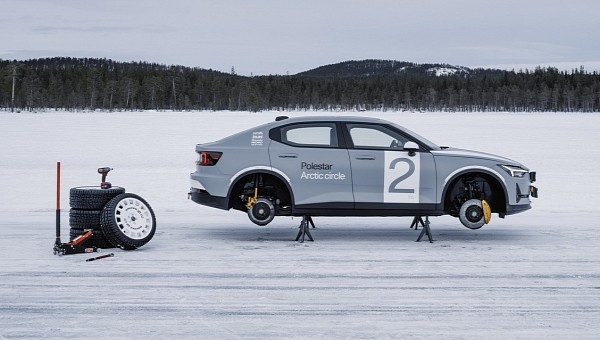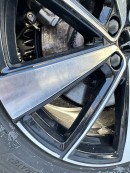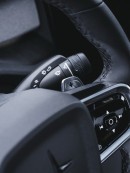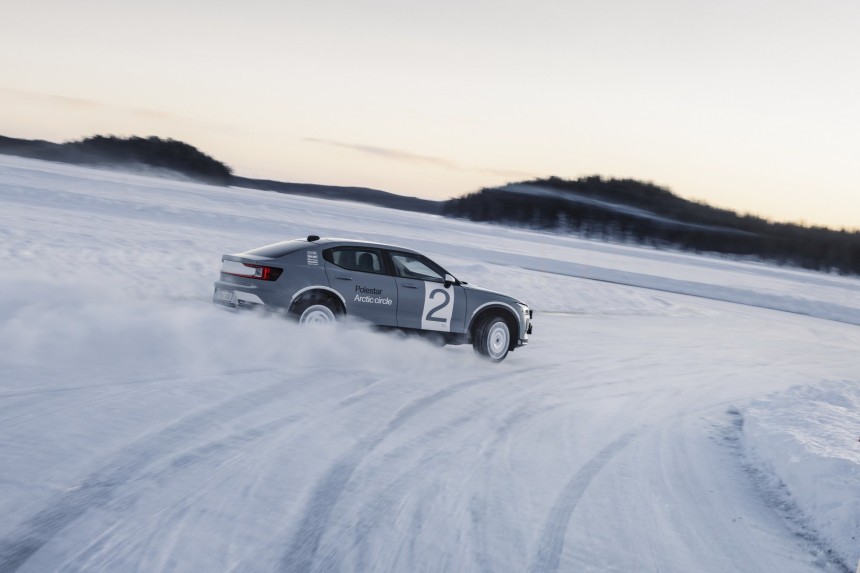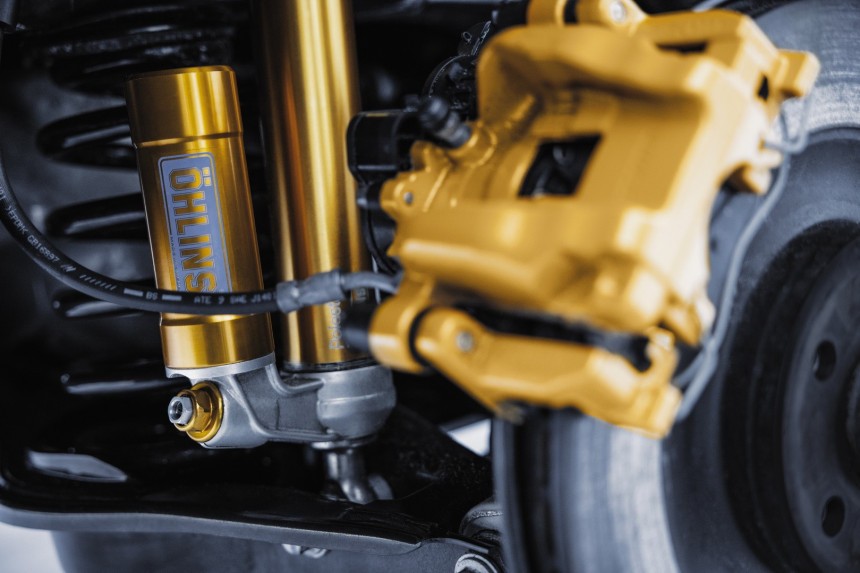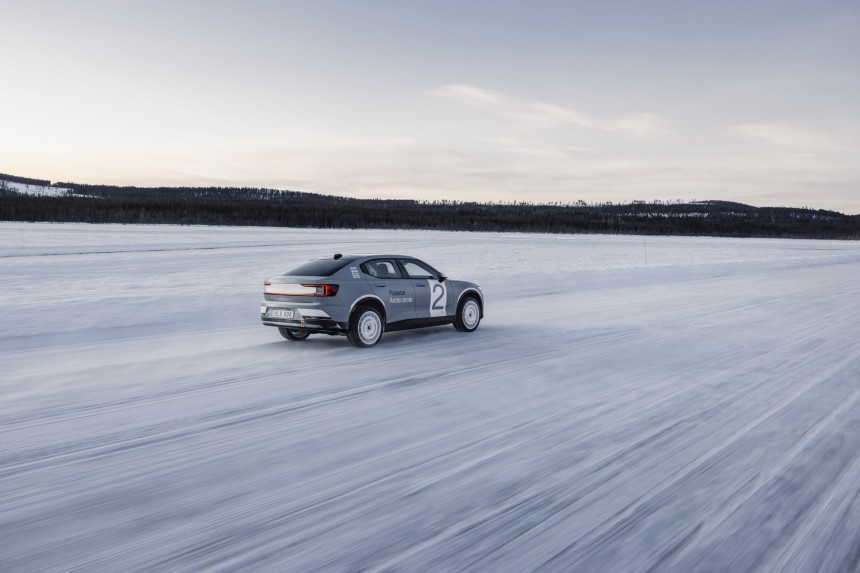Owning and driving an electric vehicle (EV) certainly has its advantages. You don’t produce as many emissions commuting as you would have with an internal combustion engine car, the ride is quieter, the power is delivered faster, there can be more cabin space thanks to fewer components, and you don’t have to use the brakes in every deceleration scenario. However, not pressing the brake pedal during wintertime might result in unwanted mishaps. Here’s how two Polestar 2 owners found out that physical braking is important and why it should matter to you, too.
Driving can be simple most of the time. But it can turn into a complicated venture sometimes. And if you’re not properly equipped to deal with some of the scenarios that can be thrown at you, then some very expensive mishaps or even life-threatening events can take place.
In this case, however, something that can be described as weird at first and as a lesson in the end happened. One Polestar 2 owner discovered that the driver’s responsibilities do not end when the vehicle is parked and locked. Volvo XC40 Recharge’s cooler-looking and high-riding hatchback cousin rolled out of this person’s driveway while being plugged in and it tore the charge port apart.
Polestar sent a specialist to the location. After two months of various checks and tests, while the lessee kept making the payments, the company’s experts concluded the vehicle wasn’t at fault so no warranty claim was approved. The person was forced to pay for everything that needed fixing.
Naturally, this whole fiasco made them upset even though Polestar wasn’t at fault in this case. The stylish crossover even has a couple of safety measures in place like putting the selector into “Park” and activating the parking brake if you must leave the driver’s seat while the car’s running. So, it would’ve been a serious issue for the Volvo-derived automaker to have its vehicle randomly disengaging the electronic handbrake because the weather isn’t friendly.
By now, you might have figured out that it was something else entirely.
During winter, physical braking is important for EVs. It’s what keeps the entire assembly at a proper temperature. Thanks to the friction created by the pads that push onto the rotor’s surface, there’s also little to no possibility that any buildup can form. Since EVs with aggressive one-pedal drive systems don’t need to use the physical brakes that much because the motors take care of deceleration and put energy back into the battery, ice can appear pretty fast between the pads and the rotors. If they’re not in use, there’s no friction, and that's why heat can’t stop the buildup from forming.
A couple of months ago, Rivian and all-electric Chevrolet owners started complaining online about snow buildup on their vehicles’ headlamps. Essentially, the same thing happened in this case as well, even though some better design might have helped avoid this problem entirely. Because LEDs don’t emit as much heat as cheap and simple halogen bulbs, ice or snow deposits can start to form. To avoid not being able to see where you’re driving at night, it’s recommended to have a deicing solution or spray handy if you drive an EV whose designers didn’t account for this possibility in a multitude of scenarios. Even a scraper might do just fine.
While noticing that your headlights don’t work properly during winter is arguably easier, checking the brakes for ice is not something we have been taught or told to do. So, another Polestar 2 owner went through the same thing. Fortunately, for this owner things did not result in an expensive fix and two months of having to use ridesharing services out of pocket, rent a lesser vehicle, or ask friends or family for a car.
However, they knew what happened with the other Polestar 2 driver and this allowed them to quickly figure out what went wrong. This person washed the vehicle before parking it in their driveway and didn’t give it much thought. But as they were attempting to plug it in, the vehicle slowly started rolling away for about six inches. The hatchback was at this point sitting a little bit farther away from the house, a thing that baffled the owner at first. But they remembered the mishap told by the other Polestar 2 driver and immediately checked the brakes. Lo and behold, ice and snow were blocking the pads from reaching the rotor.
This situation made us think about Porsche. The marque’s energy recuperation system might be the best option for all EV drivers out there. Instead of immediately activating the regenerative braking, it allows the vehicle to coast (basically moving without power). Only when the driver decides it’s time to brake, the recuperation starts to happen gradually. At first, only the motors are used. They are put into reverse and the resulting electromagnetic force wants to stop the forward momentum from happening. That’s why you feel the car slowing down and, in some poorly designed EVs, you might experience a jolt if one-pedal driving is on its maximum setting.
But when you need more braking power, the pads are squeezed by the caliper assembly onto the rotor's surface according to the pressure applied on the brake pedal. Now the brake assemblies are being properly used, which is what can save your EV from slipping out of the driveway because it eliminates parts of or all the buildup between the pads and the rotor.
Of course, things are a little bit more complicated than this. The automaker had to account for various scenarios when it cropped up this system. Porsche had to make sure that regenerative braking wouldn't be prioritized by the car over physical braking. Fortunately, some great engineering was put into this, and it has proven its reliability since the Taycan was first launched.
Finally, don’t forget to check your brakes before leaving your car parked somewhere on an incline. Other brands like BMW thought about the possibility of the parking brake disengaging and don’t allow EV owners to update their cars if it’s too cold outside.
In this case, however, something that can be described as weird at first and as a lesson in the end happened. One Polestar 2 owner discovered that the driver’s responsibilities do not end when the vehicle is parked and locked. Volvo XC40 Recharge’s cooler-looking and high-riding hatchback cousin rolled out of this person’s driveway while being plugged in and it tore the charge port apart.
Polestar sent a specialist to the location. After two months of various checks and tests, while the lessee kept making the payments, the company’s experts concluded the vehicle wasn’t at fault so no warranty claim was approved. The person was forced to pay for everything that needed fixing.
By now, you might have figured out that it was something else entirely.
Heat is important and, dare we say, required!
All-electric vehicles have two major environmentally-related advantages – they don’t pollute locally because there is no fossil fuel burning happening, and they don’t have to use the brakes as much as internal combustion engine cars do. Brake dust is a worry for climate scientists because the tiny metal particles can get into your or someone else’s respiratory system. Some studies even noted that brake dust can be more harmful in urban environments than exhaust fumes.During winter, physical braking is important for EVs. It’s what keeps the entire assembly at a proper temperature. Thanks to the friction created by the pads that push onto the rotor’s surface, there’s also little to no possibility that any buildup can form. Since EVs with aggressive one-pedal drive systems don’t need to use the physical brakes that much because the motors take care of deceleration and put energy back into the battery, ice can appear pretty fast between the pads and the rotors. If they’re not in use, there’s no friction, and that's why heat can’t stop the buildup from forming.
A couple of months ago, Rivian and all-electric Chevrolet owners started complaining online about snow buildup on their vehicles’ headlamps. Essentially, the same thing happened in this case as well, even though some better design might have helped avoid this problem entirely. Because LEDs don’t emit as much heat as cheap and simple halogen bulbs, ice or snow deposits can start to form. To avoid not being able to see where you’re driving at night, it’s recommended to have a deicing solution or spray handy if you drive an EV whose designers didn’t account for this possibility in a multitude of scenarios. Even a scraper might do just fine.
However, they knew what happened with the other Polestar 2 driver and this allowed them to quickly figure out what went wrong. This person washed the vehicle before parking it in their driveway and didn’t give it much thought. But as they were attempting to plug it in, the vehicle slowly started rolling away for about six inches. The hatchback was at this point sitting a little bit farther away from the house, a thing that baffled the owner at first. But they remembered the mishap told by the other Polestar 2 driver and immediately checked the brakes. Lo and behold, ice and snow were blocking the pads from reaching the rotor.
Be on the lookout
So, if you are an EV owner or plan on becoming one soon, it might be a good idea to start using the brakes more during the cold season. Or, make sure that you don’t have frozen calipers. It might even be a good idea to form a new habit of looking at all four corners of your all-electric vehicle that has one-pedal driving enabled after driving. You might discover that the parking brake is useless if the pads can’t touch the rotors. It could save you a lot of possible car-related headaches. And, at the end of the day, who doesn’t want to avoid an accident, right?This situation made us think about Porsche. The marque’s energy recuperation system might be the best option for all EV drivers out there. Instead of immediately activating the regenerative braking, it allows the vehicle to coast (basically moving without power). Only when the driver decides it’s time to brake, the recuperation starts to happen gradually. At first, only the motors are used. They are put into reverse and the resulting electromagnetic force wants to stop the forward momentum from happening. That’s why you feel the car slowing down and, in some poorly designed EVs, you might experience a jolt if one-pedal driving is on its maximum setting.
Of course, things are a little bit more complicated than this. The automaker had to account for various scenarios when it cropped up this system. Porsche had to make sure that regenerative braking wouldn't be prioritized by the car over physical braking. Fortunately, some great engineering was put into this, and it has proven its reliability since the Taycan was first launched.
Finally, don’t forget to check your brakes before leaving your car parked somewhere on an incline. Other brands like BMW thought about the possibility of the parking brake disengaging and don’t allow EV owners to update their cars if it’s too cold outside.
